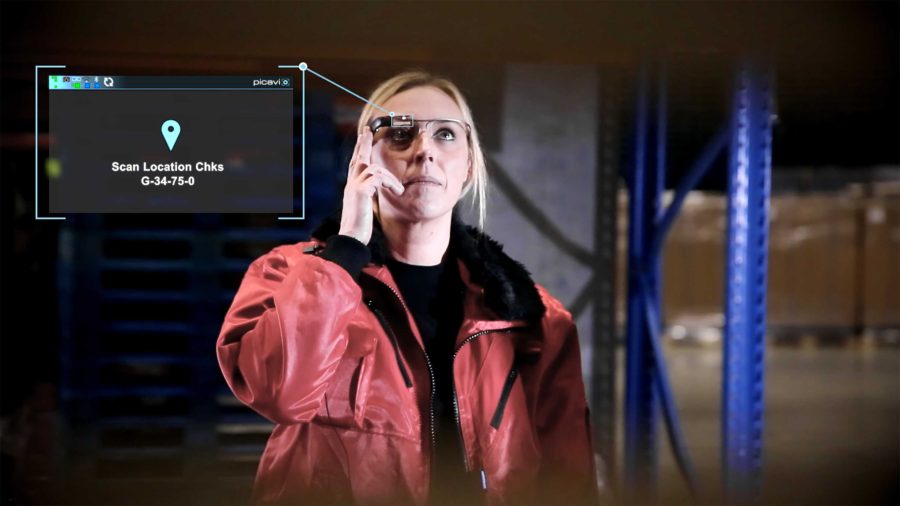
Between fitness tracking, augmented reality, and AI, wearable technology is emerging everywhere. But what started out as a novelty for techies has turned into a valuable productivity tool in virtually every industry. Companies around the world have slowly started adopting smart glasses, exoskeletons, and even microchips to streamline everyday tasks. As a result, workplaces are becoming smarter and more connected, and productivity is getting higher.
While wearable tech isn’t one-size-fits-all, these gadgets have some serious implications for the food manufacturing industry. Here’s how wearable tech is making its way into food manufacturing industry and what the future has in store for the growing trend.
Challenges of implementing tech in the manufacturing sector
Despite the manufacturing industry’s primary focus on productivity, as a whole, the industry is notoriously slow to adopt new technology. In a 2016 survey by PWC, a mere 30% of U.S.-based industrial manufacturing senior execs said they were planning on increasing IT investments in the 12 months after they were surveyed.
The food manufacturing sector is no exception. But there are a few wearable technologies you’ll want to keep your eye on, including Picavi’s recently introduced smart glasses, a vision picking technology to boost productivity in food warehouses.
Picavi’s goal is to help warehouse workers in food manufacturing plants be faster, more efficient, and more accurate. Dirk Franke, CEO of Picavi GmbH, says, “Logistics needs to be fast in food manufacturing. Pick by vision is quicker than other technologies due to the visual assistance and the hands-free working.”
How Picavi’s pick by vision technology works
Picavi fully integrated their vision picking technology into lightweight smart glasses that can operate in temperatures as low as 35℉ (2℃). The idea is for order picking workers to be able to function hands-free with very few gestures. It also helps guide workers to where they need to be by displaying information in their upper field of vision.
When employees look at a barcode, the smart glasses scan it and send the data directly to the warehouse management system. Some clients, including third-party logistics supplier Weerts, use small finger scanners in tandem with the glasses to scan barcodes in hard-to-reach places. The two devices work together seamlessly via Bluetooth.
Weerts achieved time savings of 8% to 12% by using vision picking instead of traditional handheld units.
Making the switch
Deciding to invest in new technology is just the tip of the iceberg. Implementation is its own challenge. An essential first step to ensure successful implementation and company-wide acceptance is to answer questions employees might have, such as:
- Why is part of the budget going towards new tech?
- Why do processes need to change?
- How does it affect workflow?
Then you can move on to purchasing equipment, connecting new and existing systems, and training.
In the case of Picavi’s smart glasses, employee training only takes 30 minutes. The most time-consuming part is connecting the systems. “After five to eight weeks, the smart glasses are connected to the existing system landscape via interfaces and ready to use,” explains Franke. “Introducing the pickers to the new technology takes only half an hour. With pick by vision’s intuitive handling and user guidance, order picking can start immediately.”
Wearable tech’s efficacy and user-friendliness is clear in the case of Weerts. “Our warehouse employees like the way the information is presented in their upper field of vision. It’s practical and guides them to where they need to be,” says Roger Kusters, director of the company’s distribution center.
The future of wearable tech in the food industry
Wearable tech is booming, and it isn’t slowing anytime soon. The number of connected devices worldwide is projected to jump from 453 million in 2017 to 929 million in 2020. However, with food manufacturing typically being slow to adapt, the chances that every warehouse around the globe plan on purchasing wearable tech in 2018 is slim. However, Picavi is confident that wearable tech, specifically smart glasses, is the way of the future for the food industry.
Franke says, “The wearables’ connectivity makes them future-proof so they can be easily connected to other devices. For example, smart glasses can be paired up with beacons and connect goods, transport, and warehousing. By that, food manufacturers, for example, gain insight in and control over the temperature along their whole supply chain.”
What do you think? Are you planning on implementing wearable tech in your processes?








